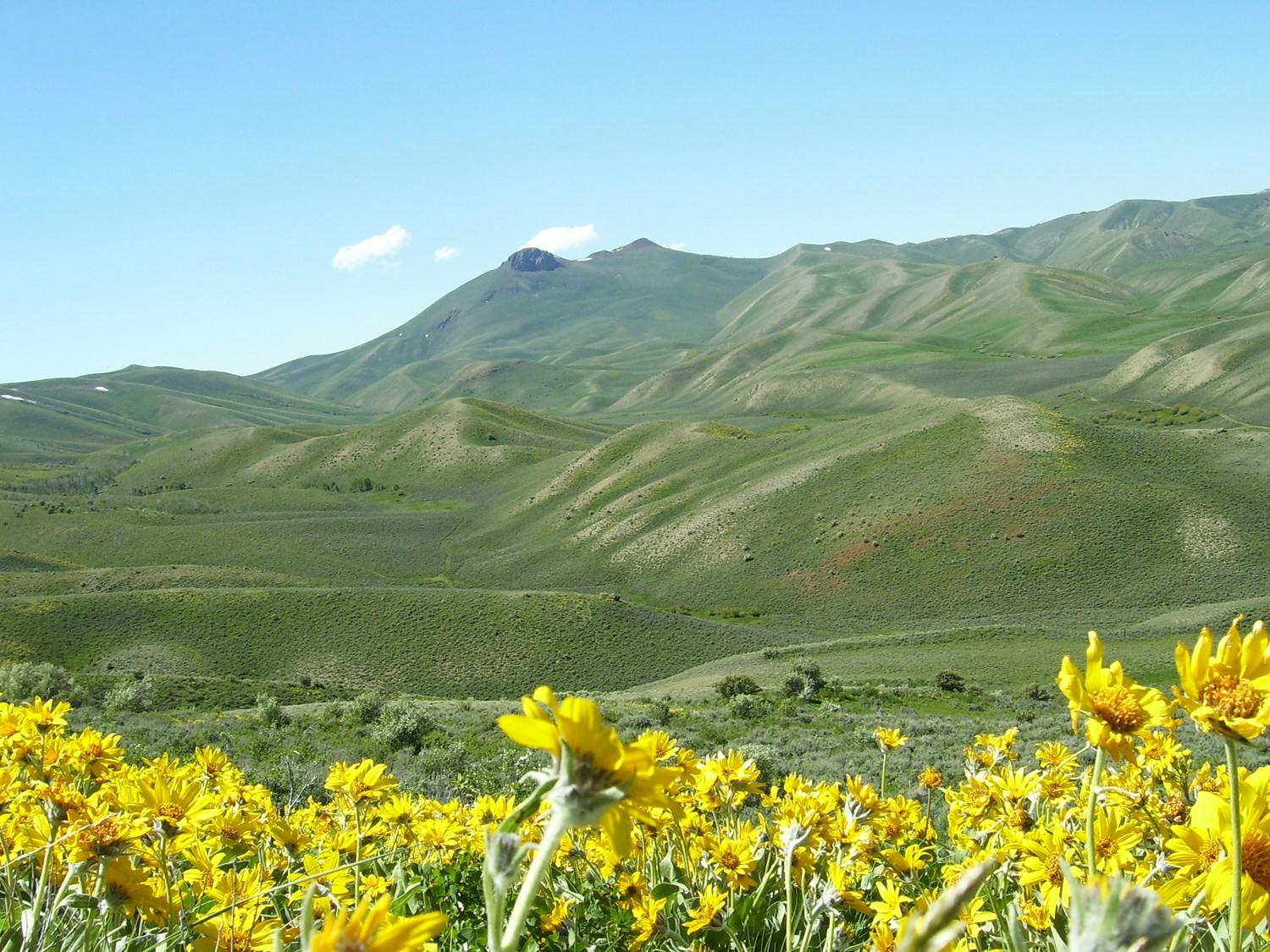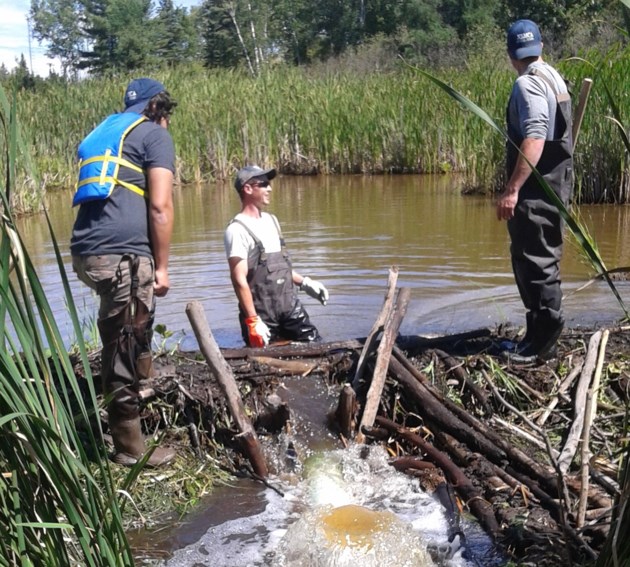Beaver benefits are on Utah public radio this morning. Let’s hope that helps his case for Kelly’s visit to the court house next week.
The Beaver: Helping Keep Water On Drying Lands on Wild About Utah

Beginning as early as the 17th century, beavers have struggled to find safe places to build their homes. Initially, hunters trapped beaver extensively to keep up with the popular beaver fashions in Europe.Then as settlers began moving west, they considered the beavers annoying because of their tendency to cause flooding and damage trees – so the trapping continued.
However, today in many parts of the American West, the beaver’s 400-year-old struggle is fading, because of their ability to keep water on dry land in an efficient manner.

While beavers may not be welcome in most city limits, ranchers and wildlife managers are re-introducing them to rural areas where the benefits of their dams far outweigh the inconveniences.
When Jay Tanner learned of the potential benefit of beavers, he drove to Utah State University and met with scientists and researchers who had experienced success in restoring beavers in the west.
 Eric Thacker, Rangeland Management Extension Specialist at USU said, “A beaver dam provides a buffer or mitigation for drought.”
Eric Thacker, Rangeland Management Extension Specialist at USU said, “A beaver dam provides a buffer or mitigation for drought.”
Kent Sorenson, habitat biologist from the Utah Division of Wildlife Resources described the financial benefit of the beavers, “[When beaver manage the dams] our operation and maintenance costs go to zero — they do all the work. They are 24/7 – 365-day maintenance crews that do not require a Corps of Engineers 404 permit.
And that! ladies an gentlemen, is what we call “good beaver press”. Share this site with your friends or nonbelievers because its a good big of persuasion from a pretty rugged source. Hopefully the judge in the McAdams case will accidentally hear it over coffee and waffles this morning. I don’t think it counts as ‘ex parte contact’ since it doesn’t star Kelly or his beavers, right?
Another nice beaver report in the form of a letter regarding depredation from the president of Protect Our Wildlife in Vermont.
Off-season trapping doesn’t help
Some of you may be familiar with official trapping season each year, but did you know that trapping occurs all year long under the guise of “nuisance” wildlife control? This unregulated, year-round trapping and killing occurs at biologically inappropriate times when animals like foxes, raccoons and others are raising their young. This means, among other things, animals are left orphaned with little chance of survival when their mothers are killed.
There are no set parameters as to what constitutes a “nuisance” animal. A warden once told me that a raccoon could be defecating in your garden and that could be considered a nuisance and therefore an excuse to kill the animal. There are many non-lethal ways to address wild animals causing damage that don’t involve killing, but the state seems to be mired in a trap/kill/repeat loop. Tragically, beavers are one of the most heavily trapped animals, leaving entire family units broken. Beaver kits stay with the parents for two years so the loss of a parent can be detrimental to the survival of offspring. Water flow control devices, exclusion fencing and wrapping trees are all long-lasting, humane options to address beaver damage.
Not only is this unjustified trapping and killing bad for wildlife, it’s bad for people. Unlicensed, unregistered “nuisance” wildlife control operators can collect payment to trap and kill animals, but these operators are not even required to have a trapping license. This means that they haven’t undergone the trapper education program nor are they familiar with best management practices. Animals trapped and killed as “nuisances” aren’t reported to the Fish & Wildlife Department so there is no data collection or controls in place to monitor what kinds of animals are killed, how many and why. For a Department who is responsible for protecting wildlife for the benefit of all Vermonters, including future generations, this seems to be a lapse in responsibility.
We are thankful for bill, H.262, An act relating to the licensing of nuisance wildlife control operators, introduced by Representative Jim McCullough, which will hopefully close some of these loopholes, if the bill is successful. When unlicensed trappers set leghold and body gripping traps during the warmer months when people are out recreating with their dogs, that presents an unintended threat. A baited trap for a raccoon will just as likely trap a dog or cat. We must emerge from the dark ages and find a better way.
Brenna Galdenzi, president of Protect Our Wildlife POW
Good letter Brenna! We here in California agree that beaver nuisance depredation is the unregulated, unobserved practice that kills far, far too many beavers. Near as I can tell looking at the text of the bill, H. 262 requires even nuisance trappers to have a license and to show the reason why lethal means are needed and what will be done to discourage wildlife in the future.
Since depredation takes resources away from EVERYONE in the state, it seems pretty reasonable to ask for these things, doesn’t it?
































 “They say the beaver dams are unstable structures, although these have been here for at least 20 years and they have withstood hundreds of high-water events over that time,” Kelly McAdams said. “The dams are well-built here and rather than removing them, they could fortify them, and I suggested putting in a grate system downstream.”
“They say the beaver dams are unstable structures, although these have been here for at least 20 years and they have withstood hundreds of high-water events over that time,” Kelly McAdams said. “The dams are well-built here and rather than removing them, they could fortify them, and I suggested putting in a grate system downstream.” Kelly McAdams have maintained their opposition to the removal.
Kelly McAdams have maintained their opposition to the removal.
 The county needs to look at the bigger picture, and see the effect that it would have on the wetlands,” Spackman-Moss said. “For these students to come out here and see what they have been studying and get a sense of the damage it would do and how this would all disappear, they would lose something so valuable.”Confe
The county needs to look at the bigger picture, and see the effect that it would have on the wetlands,” Spackman-Moss said. “For these students to come out here and see what they have been studying and get a sense of the damage it would do and how this would all disappear, they would lose something so valuable.”Confe Kelly you are doing an awesome, awesome job. I’m so impressed with your ability to pull this together, not get intimidated or overwhelmed and still seem so very reasonable. You are a credit to your state and a true kindred spirit of Martinez. I would only offer one criticism at all, and that is that last Earth day OUR hats were a little cuter. 🙂
Kelly you are doing an awesome, awesome job. I’m so impressed with your ability to pull this together, not get intimidated or overwhelmed and still seem so very reasonable. You are a credit to your state and a true kindred spirit of Martinez. I would only offer one criticism at all, and that is that last Earth day OUR hats were a little cuter. 🙂





































